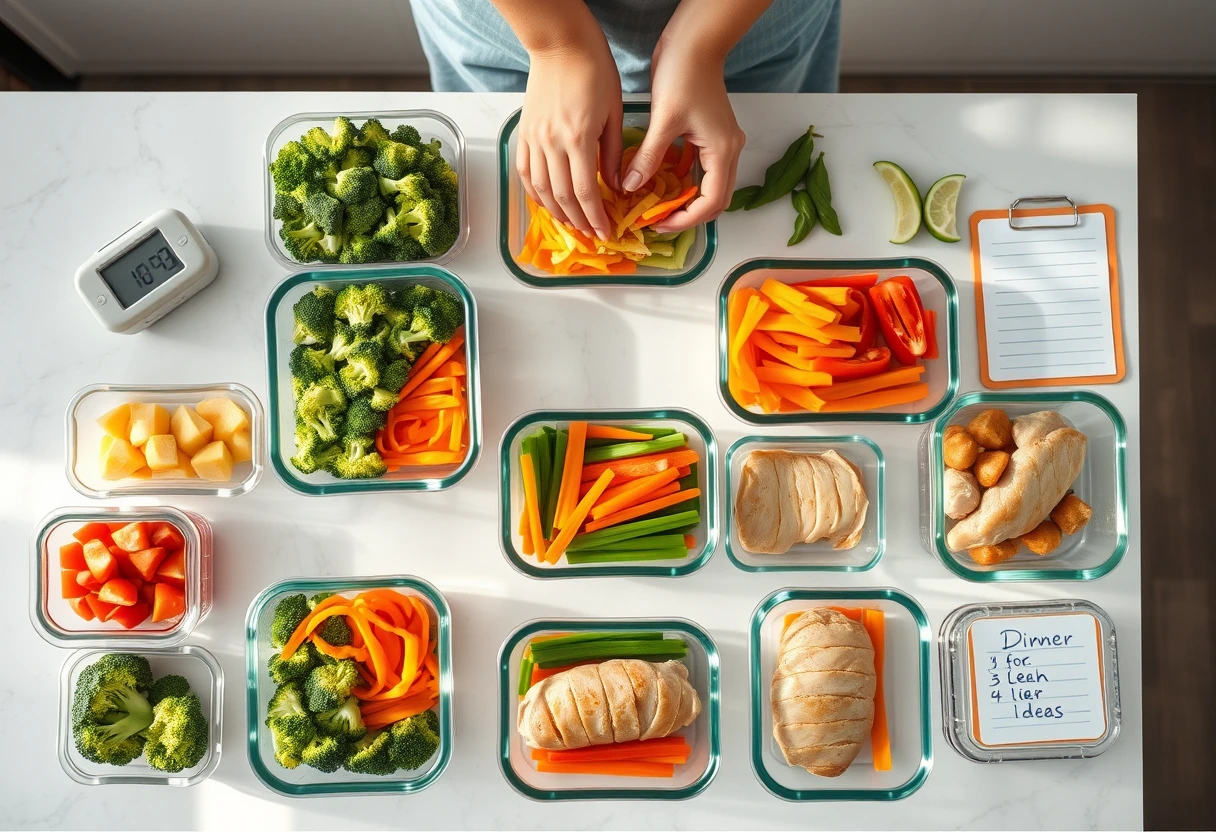 Other
OtherQuick Dinner Recipes Even the Pickiest Kids Will Eat
As a young, busy mother, the dinner dilemma is a familiar foe. After a long day of juggling work, childcare, and household chores, the last thing you want is a nightly battle at the dinner table. You dream of a world where your little ones eagerly devour their plates, but reality often serves up grimacing faces and uneaten broccoli. The good news? It’s not just a dream. There are plenty of quick dinner recipes even the pickiest kids will eat, designed to save your sanity and fill those tiny tummies with nutritious, delicious food. This comprehensive guide will equip you with the strategies and recipes you need to transform dinnertime from a dreaded chore into a delightful family ritual, ensuring happy eaters and a less stressful evening for you.
We understand the unique challenges mothers face, from limited time and energy to dealing with selective palates. That's why our focus is on efficiency without compromising on flavor or nutritional value. We'll explore clever techniques to introduce new foods, tips for making meal prep a breeze, and, most importantly, a treasure trove of fuss-free family meals that are sure to be a hit with even the most discerning diners. Say goodbye to the endless cycle of cooking separate meals or resorting to unhealthy takeout. It's time to reclaim your evenings and enjoy wholesome, hassle-free dinners that satisfy the whole family.
Understanding Picky Eaters: The Whys and Hows
Decoding Childhood Food Preferences
It's easy to feel frustrated when your child rejects a meal you've painstakingly prepared. However, understanding the underlying reasons behind picky eating can help you approach the situation with more empathy and strategic thinking. Often, it's not a deliberate attempt to annoy you, but rather a normal developmental stage. Young children are often wary of new textures, strong flavors, or unfamiliar appearances. Neophobia, the fear of new things, is a common phenomenon in childhood, and it extends to food.
Sensory sensitivities can also play a huge role. A child might be overwhelmed by the smell of certain spices, the sliminess of a particular vegetable, or the crunch of a certain food. It's not about being "bad" but about genuine sensory input. They might also be testing boundaries, asserting independence, or simply not hungry at that exact moment. Patience and consistency are your best allies in navigating these common hurdles. Don't take it personally when they refuse a dish; focus on offering a variety of wholesome options over time.
Gentle Strategies for Expanding Palates
Instead of forcing foods, gentle encouragement works wonders. Start by offering small portions of new foods alongside familiar favorites. Repeated exposure is key; it can take 10-15 exposures for a child to even consider trying a new food, let alone liking it. Don't pressure them to eat it, but encourage them to touch, smell, or even just lick it. Involve them in the cooking process – children are often more likely to eat something they've helped prepare. A simple task like washing vegetables or stirring ingredients can make a huge difference.
Another effective strategy is to "hide" vegetables in ways that are undetectable to the child's palate. Pureed cauliflower in mac and cheese, shredded zucchini in meatballs, or blended spinach in smoothies are excellent ways to boost nutrient intake without a fight. Remember, the goal is to create a positive relationship with food, not to turn every meal into a battle. Celebrate small victories, like a child trying a tiny bite of something new, and keep the atmosphere at the dinner table light and enjoyable.
The Power of Preparation: Meal Prep for Busy Moms

Batch Cooking and Smart Storage
For the busy mom, meal prep isn't a luxury; it's a necessity. Batch cooking involves preparing large quantities of certain ingredients or entire meals in advance. Think about cooking a big batch of quinoa or brown rice, roasting a tray of mixed vegetables, or grilling chicken breasts on Sunday. These components can then be mixed and matched throughout the week to create various easy dinner solutions. Investing in good quality, airtight food storage containers is crucial for keeping these prepped ingredients fresh and ready to use.
Labeling your containers with the date and contents will save you time and prevent food waste. When you get home from work or errands, half the battle is already won because your ingredients are pre-chopped, pre-cooked, or pre-measured. This drastically cuts down on active cooking time during the weeknights, making those quick dinner recipes even the pickiest kids will eat truly quick and stress-free. It also reduces the temptation to order takeout when you're exhausted.
Freezer-Friendly Favorites
The freezer is your secret weapon in the fight against dinner-time chaos. Many dishes can be made in large batches and frozen for future use. Lasagna, chili, meatballs, soups, and even some casseroles freeze beautifully. Prepare double or triple batches of these family favorites and portion them into freezer-safe containers or bags. On a hectic weeknight, all you need to do is pull a meal from the freezer, thaw, and reheat. This is particularly helpful for those evenings when unexpected events throw your schedule off track.
You can also freeze individual components, like cooked ground meat, sautéed onions and peppers, or even cookie dough for a quick treat. Don't forget about smoothie packs for breakfast or quick snacks. By strategically utilizing your freezer, you can minimize daily cooking efforts and ensure a healthy, homemade meal is always just minutes away. This proactive approach to meal planning empowers you to stay on track with healthy eating goals, even on your busiest days.
One-Pan Wonders: Minimal Cleanup, Maximum Flavor
Sheet Pan Dinners: The Ultimate Time Saver
When time is tight and cleanup is dreaded, sheet pan dinners are an absolute lifesaver. The concept is simple: toss your protein (chicken, sausage, fish, tofu) and your favorite vegetables (broccoli, bell peppers, carrots, potatoes) with a little olive oil and seasoning, spread them on a single baking sheet, and roast in the oven. Everything cooks together, infusing flavors, and leaving you with just one pan to wash. This method makes it incredibly easy to adapt to different tastes; you can even section off different seasonings for different family members.
For example, a sheet pan with chicken and roasted sweet potatoes, bell peppers, and zucchini can be seasoned with herbs for the adults and just a little salt and pepper for the kids. The beauty of this approach is its versatility. You can experiment with various combinations of proteins and vegetables, ensuring that dinner never gets boring. Plus, the high heat of roasting brings out a delicious caramelized flavor that even reluctant veggie eaters often find appealing. These are genuinely fast family meals that contribute to a peaceful evening routine.
Stir-Fries and Skillet Meals: Quick & Versatile
Stir-fries and skillet meals are another fantastic category of quick dinner recipes even the pickiest kids will eat because they are incredibly fast and customizable. Using a large skillet or wok, you can quickly cook up proteins like chicken strips, shrimp, or beef, along with a medley of finely chopped vegetables. The key is to have all your ingredients prepped and ready to go before you start cooking, as the actual cooking time is very short. A simple sauce made from soy sauce (or tamari), ginger, garlic, and a touch of honey can tie everything together.
For kids, consider offering the components separately initially, like plain rice, cooked chicken, and lightly steamed carrots, allowing them to mix and match as they prefer. As they get more adventurous, you can slowly introduce more complex flavors. These meals are not only speedy but also a great way to use up leftover vegetables. From simple chicken and broccoli stir-fry to cheesy skillet pasta, the possibilities are endless, making weeknight dinners less of a chore and more of an opportunity for culinary creativity.
Picky-Eater Approved Classics Reinvented

Sneaky Veggie Solutions: Deliciously Disguised
The art of "sneaky veggies" is a fundamental skill for any mom dealing with picky eaters. It involves incorporating vegetables into dishes in ways that are virtually undetectable by taste or texture. This doesn't mean deceiving your child, but rather ensuring they receive essential nutrients even if they're not ready to eat a whole carrot stick. For instance, finely grated zucchini or carrots can be mixed into ground meat for meatballs or burgers, adding moisture and vitamins without altering the flavor profile significantly.
Pureed pumpkin or butternut squash can enrich mac and cheese, adding a creamy texture and vibrant color. Spinach can be blended into pasta sauces or smoothies. Remember, the goal is to make healthy eating enjoyable and less of a battle. Over time, as children become more accustomed to the flavors and textures of these "hidden" vegetables, you might find them more willing to try them in their whole form. These creative meal ideas make healthy eating simple and appealing.
Kid-Friendly Comfort Foods, Healthier Versions
Comfort foods are often kid favorites, but they can also be high in unhealthy fats and sodium. The good news is that you can reinvent these classics into healthier, more balanced versions without sacrificing taste. Take homemade chicken nuggets, for example. Instead of deep frying, try baking them with a whole-wheat breadcrumb coating for a crispy, healthier alternative. You can even add a sprinkle of flaxseed or nutritional yeast to the breading for an extra nutrient boost.
Macaroni and cheese can be made with whole-wheat pasta, a cheese sauce enriched with pureed sweet potato or cauliflower, and perhaps a dollop of Greek yogurt for creaminess and protein. Pizza can be made on whole-wheat pitas or tortillas, topped with low-sodium sauce, plenty of colorful veggies (finely diced for picky eaters), and lean protein like shredded chicken. These upgraded versions of classic kid-approved meals mean fewer ingredients to worry about and more nutrients packed into every bite, making them ideal family meal solutions.
- Homemade Baked Chicken Nuggets: Crispy, golden, and secretly healthy. Dip in sugar-free ketchup!
- Hidden Veggie Mac & Cheese: Creamy, cheesy pasta with a boost of pureed veggies like butternut squash or cauliflower.
- Whole Wheat Pita Pizzas: Quick, customizable mini pizzas with your child's favorite toppings.
- Sweet Potato Fries: A healthier, naturally sweet alternative to traditional fries, baked until crispy.
- Mini Turkey Meatloaf Muffins: Individual portions of lean meatloaf, perfect for little hands.
Global Flavors for Little Palates: Introducing Variety
Mildly Spiced & Adaptable International Dishes
Introducing children to global flavors doesn't have to mean overwhelming them with strong spices. Many international cuisines offer inherently mild or easily adaptable dishes that can broaden your child's palate. Think about simple rice bowls with mild teriyaki chicken and steamed broccoli, or soft tacos with seasoned ground beef, cheese, and a dollop of sour cream. The key is to start with familiar textures and very mild flavors, then gradually introduce more complexity.
Curries can be made with a very mild, creamy base (like coconut milk) and slow-cooked vegetables, serving the sauce separately for cautious eaters. Hummus and pita bread with cucumber sticks are also wonderful for introducing Mediterranean flavors. By offering components separately initially, children can choose what they're comfortable with, reducing resistance. These easy dinner ideas for families provide a great way to introduce diverse flavors without the drama.
Building Your Own Bar: Fun & Engaging Meals
The "build your own" concept is a powerful tool for engaging picky eaters. When children feel like they have control over their food, they are much more likely to eat it. Set up a "bar" with various components and let them assemble their own plates. This works wonderfully for tacos, burritos, personal pizzas, pasta bowls, or even loaded baked potatoes. Offer a range of healthy toppings and let them choose.
For a taco bar, you could have soft tortillas, seasoned ground meat or black beans, shredded lettuce, diced tomatoes, grated cheese, and mild salsa. For a pasta bar, offer different pasta shapes, a simple tomato sauce, a creamy white sauce, and bowls of cooked chicken, meatballs, and steamed veggies. This approach not only makes dinner fun but also encourages independence and exploration, turning a simple meal into an interactive and enjoyable experience for the whole family.
Snack Solutions & Breakfast Boosters
Healthy Between-Meal Bites
While the focus is often on dinner, what kids eat between meals significantly impacts their appetite and nutritional intake. Offering healthy, satisfying snacks prevents excessive hunger, which can lead to overeating or being too full for dinner. Focus on snacks that combine protein, healthy fats, and fiber to keep them full longer. Think sliced apples with peanut butter, Greek yogurt with berries, cheese sticks with whole-grain crackers, or a handful of nuts and dried fruit.
Keep pre-portioned snacks readily available to avoid last-minute unhealthy choices. For example, prepare small baggies of trail mix or containers of cut-up fruit. These thoughtful choices in between meals contribute to overall balanced nutrition and ensure that children come to the dinner table with an appropriate appetite, ready to enjoy the main meal. Quick family meals also benefit from well-managed snacking habits.
Power-Packed Breakfasts to Start the Day Right
Breakfast is often called the most important meal of the day for a reason. A nutritious breakfast provides the energy and focus needed for school and play. For busy mornings, opt for quick and easy options that are still packed with nutrients. Overnight oats, made the night before, are a fantastic choice, customizable with fruit, nuts, and seeds. Whole-wheat pancakes or waffles can be made in large batches and frozen, then popped into the toaster for a speedy breakfast.
Scrambled eggs with a side of fruit, or a smoothie made with milk, yogurt, fruit, and a handful of spinach (undetectable!) are also great options. A good breakfast sets the tone for healthy eating throughout the day and can even influence how receptive children are to trying new foods at dinner. Providing a consistent source of balanced meals and snacks helps picky eaters broaden their horizons. These simple meal ideas make mornings easier.
Making Dinner an Experience, Not a Chore

Involving Kids in the Kitchen
Getting children involved in the cooking process is one of the most effective ways to encourage them to try new foods. When they participate in preparing a meal, they develop a sense of ownership and pride, making them more likely to eat what they've helped create. Even toddlers can help with simple tasks like washing vegetables, stirring ingredients, or setting the table. Older children can measure, chop (with supervision), or mix. This not only teaches them valuable life skills but also makes dinner prep a fun, shared activity.
Let them choose a recipe from a selection of healthy options, or pick a new vegetable to try. Talk about where food comes from and the different colors, textures, and smells. The more positive experiences children have with food outside of the pressure to eat, the more adventurous they will become. This active participation turns healthy family meals into an engaging learning opportunity, leading to less fuss over dinner.
Creating a Positive Dining Environment
The atmosphere at the dinner table can significantly impact a child's willingness to eat. Aim for a positive, relaxed environment rather than a high-pressure one. Avoid power struggles over food; if a child genuinely isn't hungry, forcing them to eat can create negative associations. Focus on conversation and connection, not just consumption. Eating together as a family is vital for fostering healthy eating habits and strengthening family bonds.
Turn off screens, sit together, and talk about your day. Make dinner a time for sharing and enjoyment. Offer small portions and allow children to ask for more if they're still hungry. Celebrate the foods they do eat, and gently encourage, rather than demand, that they try new things. Remember, patience and persistence are key. Over time, with consistent positive exposure, even the pickiest eaters can expand their palates and enjoy a wider variety of delicious meals.
- Set a Regular Mealtime: Predictability helps regulate appetite and routine.
- Avoid Distractions: Turn off TV and phones during meals to focus on food and family.
- Eat Together: Model healthy eating and positive food interactions.
- Offer Choices (within limits): Give kids a sense of control without overwhelming options.
- Praise Effort, Not Just Consumption: Acknowledge when they try a new food, even if they don't like it.
Overcoming Specific Picky Eating Challenges
Texture Aversions & Sensory Issues
Some children have strong texture aversions, finding certain foods slimy, mushy, or too crunchy. If your child struggles with textures, try to modify foods to suit their preference. For example, if they dislike mushy vegetables, try roasting them until they're crispy. If they dislike chewy meats, offer thinly sliced or shredded chicken. Smoothies are excellent for blending nutrient-dense ingredients into a uniform texture. Serving foods separately can also help, allowing them to control how they combine different textures.
For children sensitive to strong smells or flavors, start with very bland versions of dishes and gradually introduce more seasoning. For instance, cook vegetables simply with salt and a touch of butter before moving to herbs or spices. Remember to be patient and keep offering a variety of textures; preferences can change over time. These adaptable family meals can really help overcome challenges.
Food Refusal and Mealtime Battles
When food refusal leads to mealtime battles, it's crucial to disengage from the power struggle. Your role is to offer nutritious food at regular intervals; your child's role is to decide whether and how much to eat. Avoid bribing, forcing, or punishing. This can create negative associations with food and lead to further resistance. Instead, focus on creating a positive and pressure-free environment.
If a child refuses to eat, calmly remove the plate after a reasonable amount of time (e.g., 20-30 minutes) without offering alternatives until the next scheduled meal or snack. This teaches them that if they don't eat at mealtime, they'll be hungry later. Consistency is key. While it can be tough, sticking to this approach usually reduces mealtime drama over time. Offering a selection of quick, healthy family dinners consistently can make a big difference.
Conclusion: Happy Bellies, Happy Homes
Navigating the world of picky eaters as a busy mother is undoubtedly challenging, but it's far from impossible. By implementing smart meal prep strategies, embracing one-pan and skillet wonders, creatively incorporating hidden veggies, and reinventing beloved classics, you can consistently serve up quick dinner recipes even the pickiest kids will eat. Remember, the journey to a less selective palate is a marathon, not a sprint.
Patience, consistency, and a positive approach are your most powerful tools. Involving your children in the cooking process, creating a relaxed dining environment, and understanding the 'why' behind their food preferences will transform mealtime from a source of stress into a cherished family experience. Embrace these practical, fuss-free family meals and watch as your little ones, and your sanity, flourish. Here's to more joyful dinners and healthier, happier homes!
